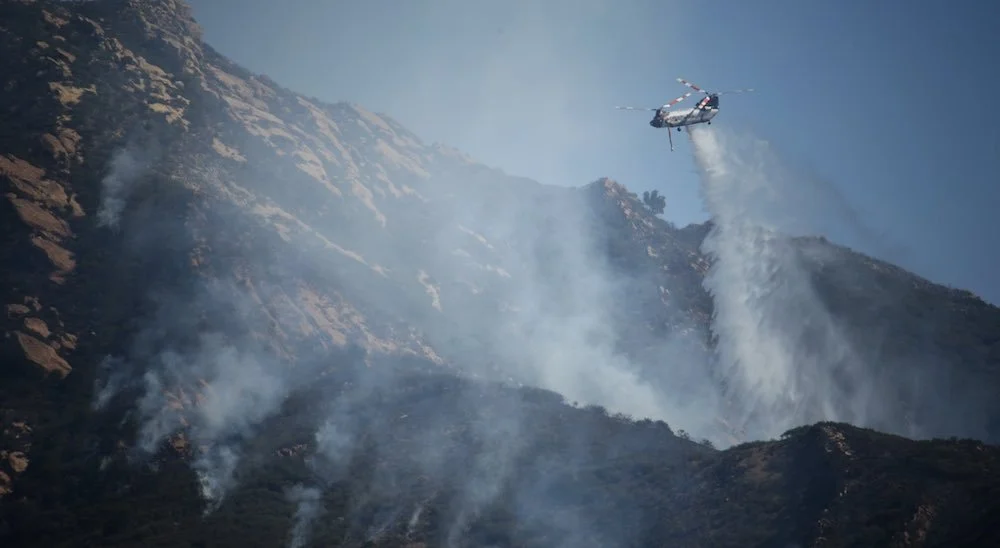Here’s All We Know About COP26 So Far
After more than two weeks of rigorous COP26 negotiations, hosted by the United Kingdom, over 200 countries agreed to accept the Glasgow Climate Pact. Even as coal-dependent countries lodged last-minute concerns, the United Nations climate talks finished Saturday, the 13th of November 2021, with an agreement that, for the first time, the dominant driver of global warming is fossil fuels.
Note: This is the 26th time countries have met under the climate change conference (COP) pact— hence, the name COP26.
Here are some key facts and outcomes of/ from COP26:
1.5 Degrees To Now Take Control
COP26 provided a huge triumph in terms of taking real action beyond the same old ‘we're aiming for a temperature rise of fewer than 2 degrees Celsius.’ Crucial commitments to cut carbon emissions to keep global average temperature rise in check were upheld. A recognition that all 197 countries who backed the 2015 Paris Agreement need to get on track quickly to limit global warming to 1.5 degrees Celsius— the point at which experts believe the risks of global warming such as severe heatwaves, water shortages, crop failures, and ecosystem collapse will increase dramatically.
To meet that target, all countries must commit to lowering emissions much more quickly and deeply than they are now. Wealthy countries are also expected to dramatically expand financial support to help the most vulnerable countries adapt to the effects of global warming and develop economies that are not reliant on fossil fuels.
The 2.4 Degrees Gloom
The previous promises to reduce emissions were reinforced during the COP26 conference, thanks to the UK government's unrelenting campaign “keep 1.5 degrees alive.” Ireland contributed by submitting its Climate Action Plan for a 51% emission reduction by 2030.
Bringing a sense of hope into the talks, analysts predicted a milestone— that after week one, the world will be on track for less than 2 degrees Celsius or even 1.8 degrees Celsius. However, leading research groups stated otherwise— that even if 2030 emission goals are met, the planet will warm by 2.4 degrees Celsius. In a nutshell, an inhospitable Earth. More severe and destructive weather events and rising sea levels.
Countries will be invited to reconvene next year for improving the existing insufficient emissions reduction pledges— 1.5 degrees Celsius is yet to be achieved, but COP26 has made the action plan more apparent than before.
New Net-Zero Commitments
One of the key goals at COP26 was for countries to achieve net-zero emissions, or create an equilibrium between greenhouse gases generated and absorbed from the environment by 2050. Scientists warn that global warming will continue to worsen unless mankind achieves worldwide "net-zero" emissions or the moment at which we are no longer emitting any extra greenhouse gases. As a result, an increasing number of governments and organizations have pledged to "become net-zero" within a specific timeline. While that sounds great on paper, not so much in practice.
In practice, regrettably, it contributes to the perpetuation of the idea in innovation deliverance, which reduces the call-to-action regarding the urgency to reduce emissions. The concept of net-zero has allowed for a deliberately careless mentality of making up for mistakes later— resulting in continued increases in carbon emissions. It has also accelerated the obliteration of the natural phenomena by intensifying deforestation, considerably raising the risk of potential incoming disasters.
Hitting The Reverse Gear- Deforestation
Cop26 resulted in over 141 countries signing the Glasgow Leaders' Declaration on Forests and Land Use, with 90% percent of the world's forest owned by the signatories. The declaration called for collaborative efforts to curtail and reverse forest and land degradation by 2030 while facilitating global synergy to limit global temperature rise below 2 degrees Celsius or 3.6 Fahrenheit. The arrangement, which is the summit's first significant agreement, is backed by almost £14 billion pledge funds. Brazil, which deforested one-third of its forest restoration goals made in the Paris Agreement in December 2015, was one of the first countries to sign up. U.S President Joe Biden stated that he will work with Congress to allocate up to $9 billion by 2030. Jeff Bezos, the Amazon Mogul, has pledged to donate $2 billion to aid in the restoration of natural ecosystems and the transformation of farming production. Meanwhile, biodiversity-rich countries like Bolivia, and India, one of the world's top 10 forest-rich countries accounting for about 2% of the total global forest area, did not participate in the pact.
Methane Takes the Spotlight
Methane, a dangerous greenhouse gas produced by the fossil fuel industry and agriculture, has a global warming potential of 28-34 times more than CO2 over 100 years. It is also currently the world's biggest barricade in the struggle against global warming. More than 110 countries approved initiatives to reduce 30% emissions by 2030— signed the Global Methane Pledge, led by the United States and the European Union. To the world’s surprise, the United States and China earmarked their differences on other matters and declared a collaborative plan to fight climate change. This was supported by genuine camaraderie between John Kerry and China's top negotiator Xie Zhenhua in Glasgow.
The United States and China have no shortage of differences, but on climate, cooperation is the only way to get this job done”— John F. Kerry, U.S. Special Presidential Envoy for Climate.
Closing The Curtains on Coal
Over 40 nations signed to phase out coal power, while 23 countries went above and beyond the Glasgow Climate Pact— pledging to cut out coal completely for the first time. Some countries agreed on joining efforts to assist emerging nations such as India and South Africa in making the shift to cleaner energy. Major international public banks also declared the phasing out of new coal power by the end of 2021. China, the world's top coal producer and consumer, accounting for 54% of the world's coal consumption in 2020 did not sign the pledge. Other large coal consumer countries like India and Australia also did not participate. The United States, while avoiding the pledge to end coal production, agreed to stop financing the overseas oil, gas, and coal.
India's Net-Zero Surprise
India’s Prime Minister Narendra Modi made an unexpected announcement to strive for net-zero emissions by 2070. This marks the third-largest carbon emitter country, behind China and the United States, its first deadline for climate change commitment— seeding optimism that the end of fossil fuels by the world's top emitters may be getting closer. India’s Net-Zero pledge also includes a goal of obtaining 50% of India's energy from renewable sources by 2030. Nigeria, Russia, and Saudi Arabia have likewise committed to achieving net-zero emissions by 2060.
Climate Finance— The $100 Billon Promise
Governments agreed to establish a system to assist countries that are already victimized by climate change impacts. The deal also called on affluent countries to keep their promise of generating $100 billion funding each year to assist developing countries to fight climate change. A few countries made such commitments at COP26. Japan committed a yearly extra of $2 billion for the next five years, while Italy committed an additional $1.4 billion per year.
Finance Industry Net-Zero Pledge
Over 450 banks, insurance, investment companies, and other financial institutions with a combined $130 trillion in assets have pledged to use their resources to achieve net-zero emissions by 2050.
The Zero-Emission Vehicles
Over 30 countries including states, towns, and automobile manufacturers have vowed to work together to ensure that new vehicles and vans sold in top economies are zero-emission by 2035 and worldwide by 2040.
Image Source: Santa Barbara County Fire Department
Final Thoughts
Countries have less than ten years to reduce emissions to keep global warming below 1.5 degrees. Many believe that if authorities don't take decisive steps now when so much attention is focused on Glasgow, the globe will speed up to disastrous levels of warming. According to scientists, every fraction of a degree of warming will result in more violent heat waves, droughts, floods, and wildfires.
At the end of the day, the fate of our planet rests on how well the nations can deliver on their commitments.

